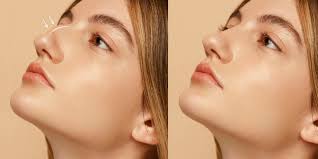Overview Thinking about reshaping your nose? Rhinoplasty can refine the bridge, tip, or nostrils so your features look balanced without looking “done.” Dubai attracts patients from around the world for nose surgery thanks to experienced surgeons, advanced clinics, and recovery plans that fit busy schedules. Here’s a clear, step-by-step guide to help you decide if it fits your goals.
What Rhinoplasty Can Improve
- A hump on the bridge
- A wide, droopy, or bulbous tip
- Crooked alignment after injury
- Large or flared nostrils
- Breathing issues due to a deviated septum
- Imbalance between nose size and facial features
Who Makes a Good Candidate
- You want subtle, natural-looking refinement, not a one-size-fits-all nose
- Your facial growth is complete, usually age 16 to 18 and above
- You are in good health and can pause nicotine before and after the procedure
- You have realistic expectations and understand the timeline for swelling to settle
Types of Rhinoplasty in Simple Terms
- Closed rhinoplasty: All incisions inside the nostrils. Often used for moderate changes with less visible swelling.
- Open rhinoplasty: A small incision across the columella for full visibility of structures. Ideal for precise tip work, revisions, and complex cases.
- Functional rhinoplasty: Focuses on breathing issues, often combined with cosmetic changes.
- Revision rhinoplasty: Corrects or refines previous surgery. Requires advanced expertise and careful planning.
- Septorhinoplasty: Combines septum correction with cosmetic reshaping for both form and function.
How the Procedure Works
- Anesthesia: Usually general anesthesia or deep sedation.
- Incisions and access: Closed or open approach depending on your goals.
- Reshaping: Cartilage and bone are refined to adjust the bridge, tip, and nostrils. Cartilage grafts may be used for support and symmetry.
- Breathing correction: Septum straightening and internal valve support if needed.
- Closure and splint: Fine sutures close the incisions. A splint supports the new shape for about a week.
What Recovery Really Looks Like
- Days 1 to 3: Swelling and pressure are common. Keep your head elevated and use cold compresses as instructed.
- Days 4 to 7: Bruising peaks then fades. The external splint usually comes off around day 6 to 8.
- Weeks 2 to 3: You look presentable for social and work settings with light makeup if desired.
- Months 1 to 3: Most swelling subsides, especially at the bridge.
- Months 6 to 12: Tip definition sharpens as residual swelling resolves. Final results show at about 12 months.
Tips for a Smoother Recovery
- Sleep with your head elevated for 1 to 2 weeks
- Avoid heavy exercise for 3 weeks and contact sports for at least 6 weeks
- Do not wear glasses on the bridge until cleared by your surgeon
- Use saline sprays if prescribed and follow cleaning instructions
- Protect your nose from sun to reduce swelling and discoloration
Expected Results and Longevity Results are long lasting. Your nose will continue to age with you, but the reshaped structure stays. The best outcomes look like an improved version of you, not a new person. Good skin care, stable weight, and sun protection help maintain the refined contour.
Potential Risks to Consider All surgery carries some risk. With rhinoplasty, possible issues include bleeding, infection, prolonged swelling, asymmetry, scarring, changes in sensation, or breathing difficulties. Choosing a surgeon with strong rhinoplasty credentials and following aftercare closely reduces these risks.
Why Many Patients Choose Dubai
- High volume of rhinoplasty specialists with deep experience
- Modern operating facilities and anesthesia standards
- Access to advanced imaging and 3D planning
- Clear aftercare pathways suited to local and international patients
- Options to combine functional and cosmetic corrections in one surgery
How to Choose the Right Surgeon
- Look for focused experience in rhinoplasty and revision cases
- Review before-and-after photos of patients with noses similar to yours
- Ask about their approach to preserving nasal function and long-term support
- Confirm details about swelling control, taping, splinting, and follow-up schedule
- Make sure communication feels honest, detailed, and patient-centered
Cost Snapshot Pricing varies with complexity, anesthesia, facility, and whether functional work is included. A personal consultation will give you an accurate quote and a plan that matches your goals and timeline.
Alternatives if You Are Not Ready for Surgery
- Non-surgical nose shaping with fillers can camouflage small bumps and lift the tip slightly. It does not reduce size and is temporary.
- Breathing-only procedures can help if function is your primary concern, without changing appearance.
Next Steps If you are considering rhinoplasty in dubai, schedule a consultation to review your anatomy, goals, and recovery window. Bring reference photos that show proportions you like, not a single “ideal” nose. The aim is harmony with your face.
Bottom Line Rhinoplasty can refine your features and improve breathing when needed, while keeping your look natural. With a skilled surgeon, clear expectations, and good aftercare, you can achieve balanced, confident results that last.
